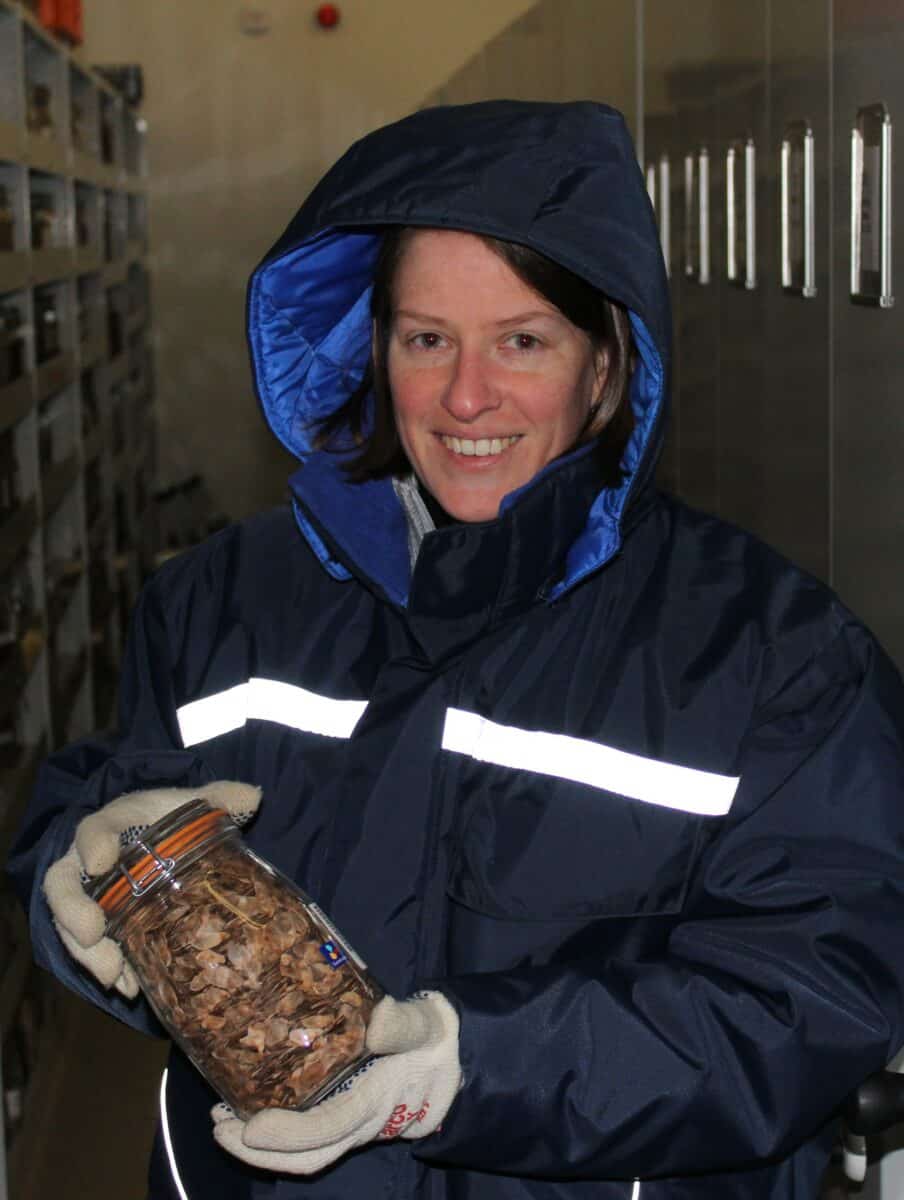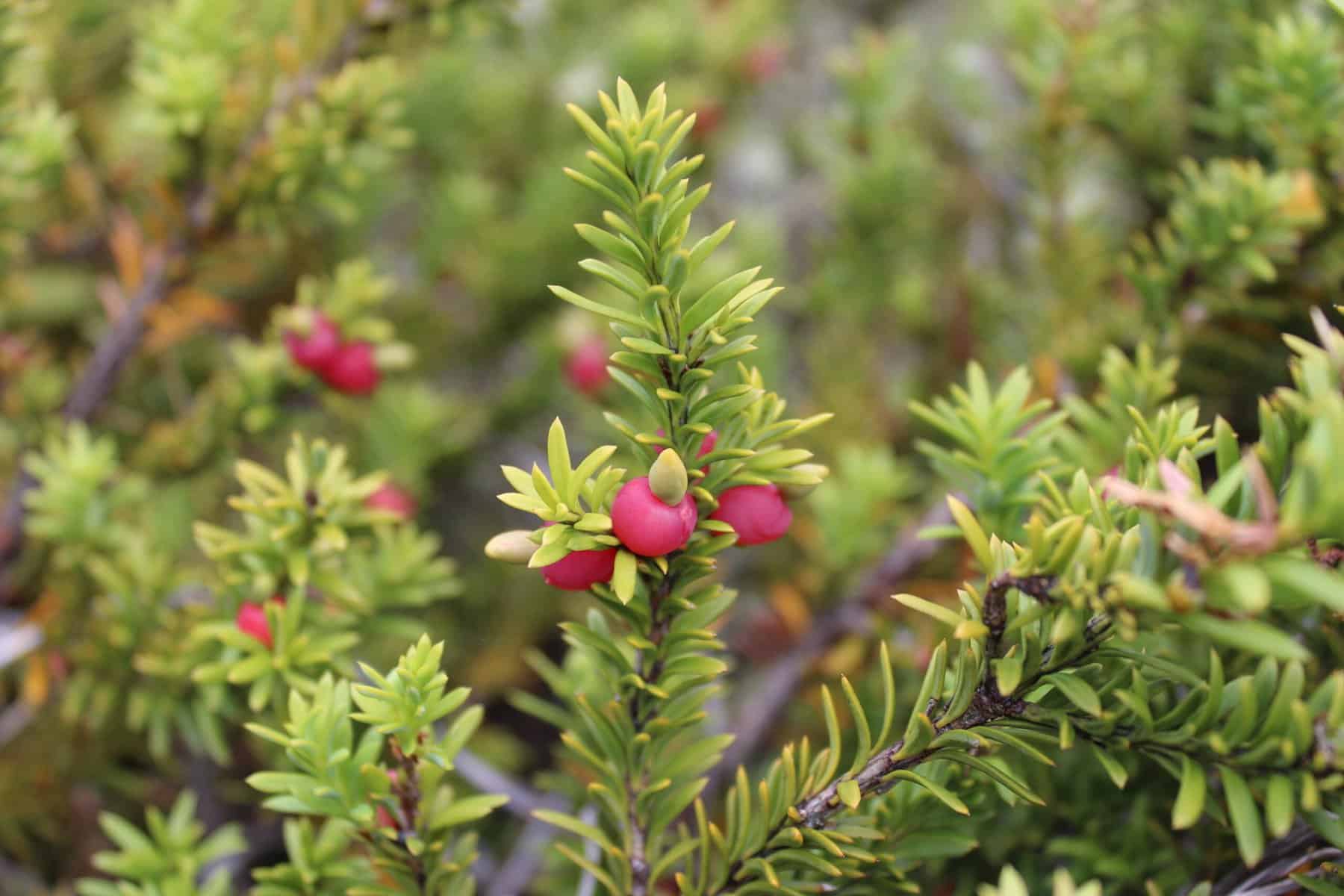Not only providing the set and stage for our native fauna, Aotearoa New Zealand’s trees are themselves diverse and dynamic players in our native ecosystems. Sarah Wyse calls them the “main event.”
“Prior to human arrival, Aotearoa was 80 to 90% forest. They’re the heart of our ecosystems,” she says. “What’s more, the species here are unique to the weird and wonderful conditions Aotearoa offers.”
With so many of our native tree and plant communities found nowhere else (86% of seed plant flora are endemic), the stakes are high in our conservation efforts.
“If we lose an endemic species, they’re lost for good,” says Sarah.
Pest trapping programmes and habitat restoration are helping turn the tide on extinction. But what happens in the face of devastating events like fire, flood or disease? Sarah says back-ups are important.
“In situ conservation is looking after the species on the land where they naturally occur,” says Sarah. “Ex situ conservation is what goes on outside of the natural habitats of the species. That’s where seed banking comes in.”

A seed bank is a controlled environment where seeds are stored to prolong their viability – typically stored at low temperatures and low humidity. Cool digs, right? Refrigeration extends the life of seeds, in the same way that leafy greens keep better in your fridge. But if ice crystals form within the seed, the delicate cellular structures can be irreparably damaged. To avoid this outcome, seeds can be desiccated (or dried out) before they’re sent to the cooler.
These two key principles of seed banking – (1) dried please, before the (2) deep freeze – work extremely well for plants that grow in temperate places subject to marked seasonal change, with hot summers and cold winters. These temperate zones include much of Europe, northern regions of Asia, as well as the tail-end of South America, Tasmania, and Aotearoa.

Sounds promising for the Antipodean seed banker! However, Aotearoa’s unique natural history means many local plant families have lineages that can be traced back to hot steamy rainforests. Generally speaking, these tropical-descendants do not like dehydration any more than they like ice crystals.
“In tropical rainforests, seeds are shed from their parent rearing to go and germinate very quickly,” says Sarah. “Drying them will kill them. And if you can’t dry them, you can’t freeze them.”
While seed banking efforts are not unheard of here (notable efforts were platformed at Te Mana Motuhake o te Kākanoa Māori Seed Conservation Hui held in 2023), Aotearoa has so far gone without a concerted national effort.
Sarah and her research team set themselves the task of assessing the feasibility of conventional seed banking strategies for the estimated 1,984 species and subspecies of plants that make seeds (not including plants that make spores, like ferns) endemic to Aotearoa.
“We were pulling together current knowledge of seed banking in New Zealand, drawing from resources such as the Royal Botanic Gardens, Kew, as well as informal (‘grey’) literature, like records from nursery growers,” says Sarah. “Once a database was created, we were able to see the knowledge gaps in how our seeds would behave under conventional seed banking conditions.”
“We were then able to make predictions to fill those knowledge gaps – based on things like the species’ habitat and how its relatives behave.”
From there, Sarah and her team had a rough number of the plants that could currently be stored. Their findings suggest around 80% would be covered by tried and tested methods, leaving 20% needing more thought and innovation.
“This knowledge gives us the opportunity to take stock of Aotearoa-specific seed banking, highlighting areas where we need to work out alternate strategies for the species we know we can’t store conventionally.”
Sarah Wyse
Sarah hopes this information can be helpful for directing resources effectively to seed banking in the future.
“The preservation of plant biodiversity is of innumerable value, not only in terms of the new plant medicines we may derive from forest ecosystems, but in our journey as stewards sharing Planet Earth with countless other species.”
Read the full Ngā Rākau Taketake-supported paper here: Can seed banking assist in conserving the highly endemic New Zealand indigenous flora? https://www.publish.csiro.au/pc/pdf/PC23029
Kerry Donovan Brown
